The Big Island

Still a work in progress, with fewer than a million years on the clock

The island which lends its name to the state, Hawaii’s big island is the newest and most volcanically active in the archipelago. Sitting over a hot spot as the Pacific plate carries the older islands away, Hawaii is primarily comprised of the two massive volcanoes Mauna Kea and Mauna Loa, but with the smaller Kilauea being much more active over the last hundred years or so.
I visited the Big Island on my fourth trip to Hawaii, during my time living in Alaska it was an easy winter destination with a six-hour direct flight. I had wanted to go to the Big Island since I was eight years old and learned about the volcanoes while at school in Houston. My primary goal was to get close enough to an active lava flow to feel the heat, and I’m pleased to say it was an emphatic success.
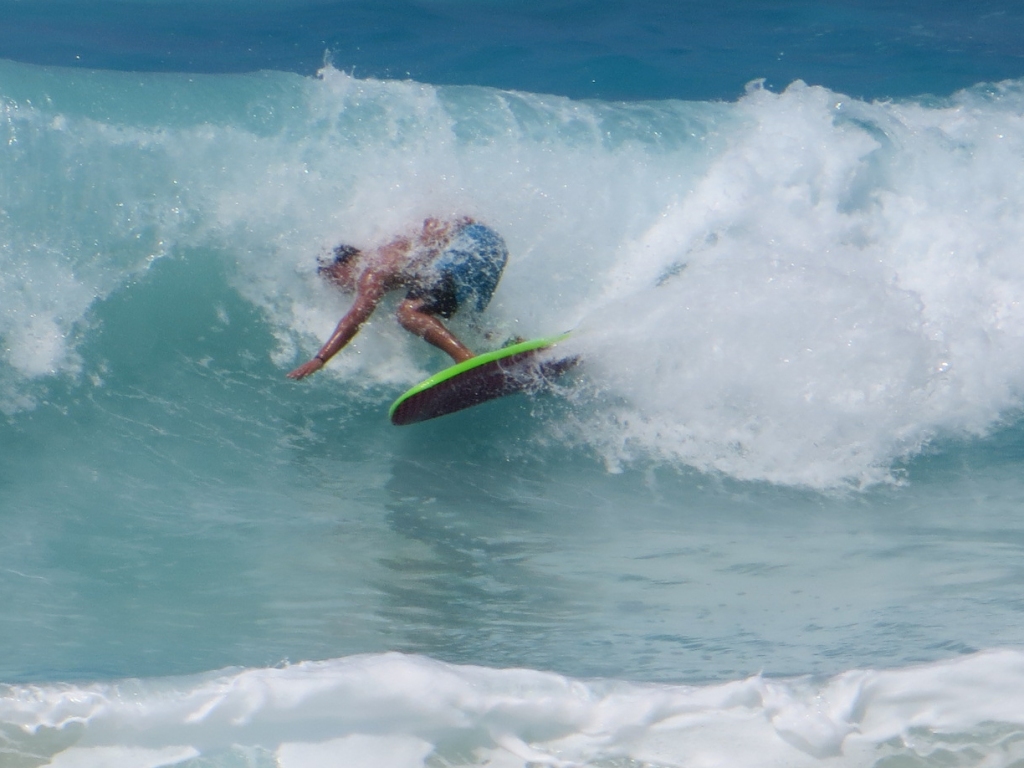
Surfer dude catching some waves on the west coast, possibly Kekaha Beach just north of Kona airport, my point of arrival.
But straight on with the volcanism – I stayed my first three nights at the Volcano Inn on Old Volcano Road, within Volcanoes National Park. Being in no doubt about what I was there for, I set off into the park and first encountered these steam vents at the roadside.
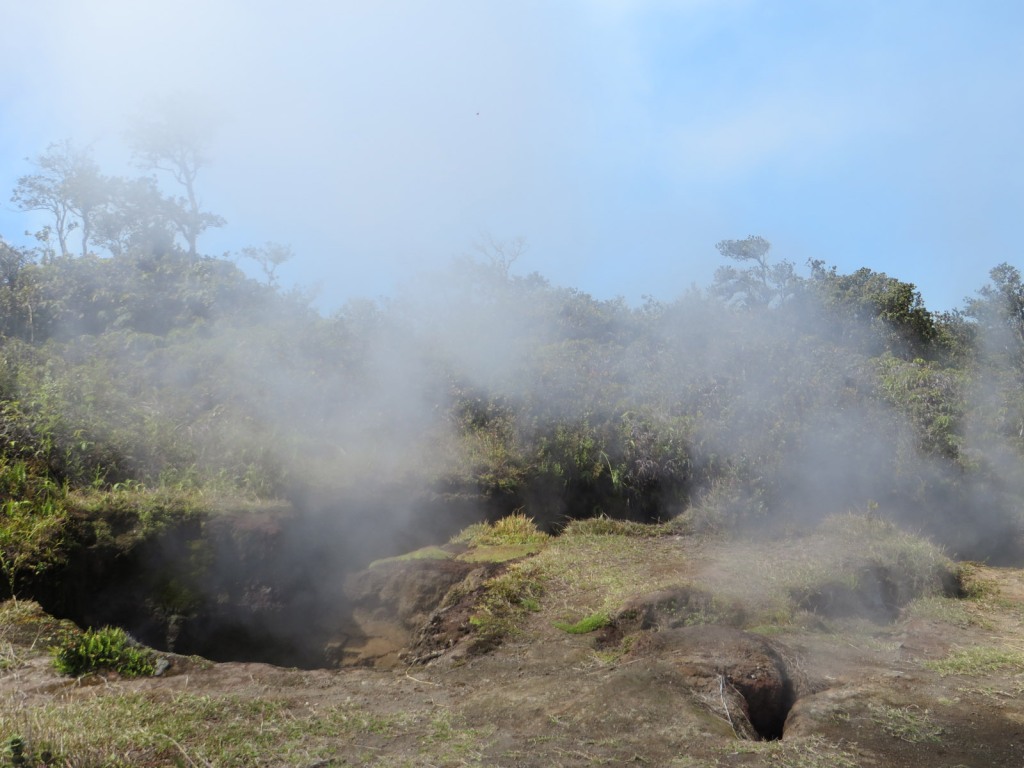
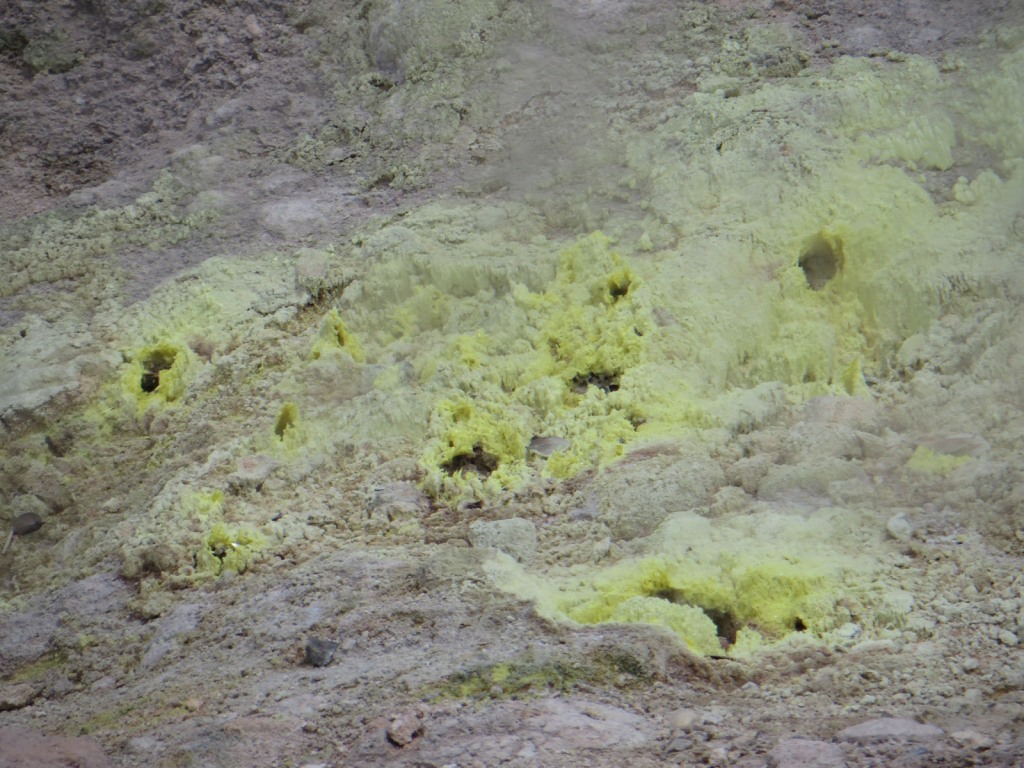
Sulphur deposits collecting around steam vents on the approach to Kilauea crater.
Kilauea had been erupting continuously since 1983 when I arrived in 2016, but it took a break following the particularly active eruptions of 2018. For my arrival, the active lava lake at the base of the crater was smoking away happily.

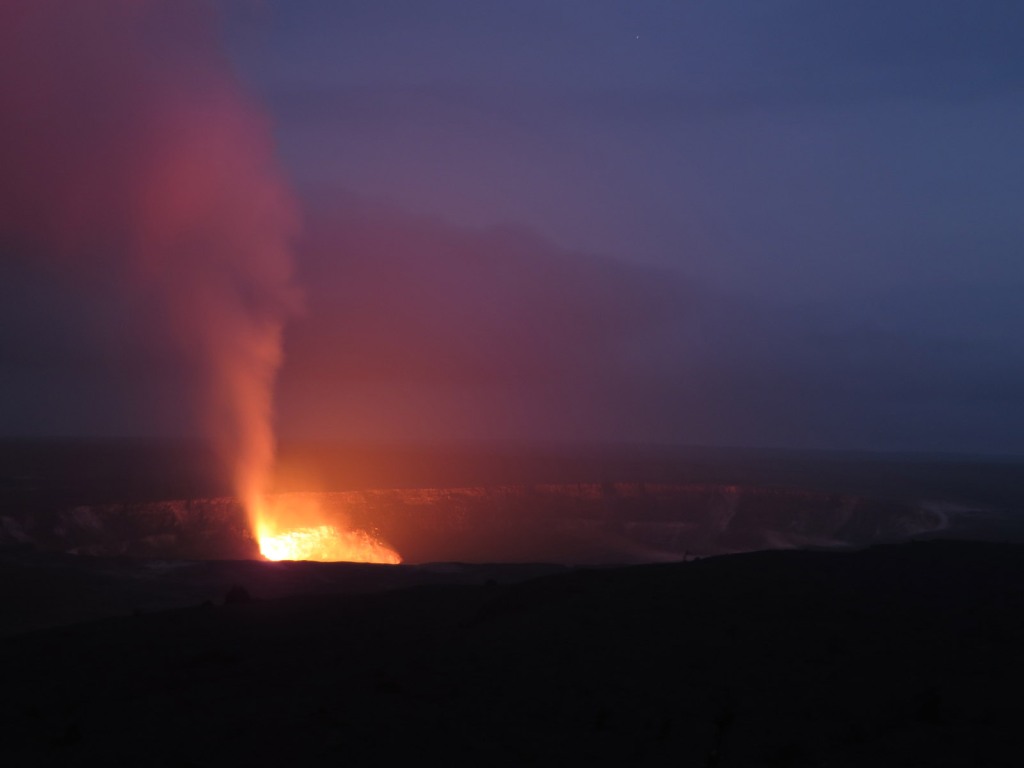
By night it was much more apparent what was going on – as viewed from the nearby Jagger Museum, the fiery glow of liquid lava lit up the sky. The Halemaʻumaʻu crater was around 750 metres across at this time, but more than doubled in size when it collapsed during the 2018 eruptions.
Lava migrates underground through tubes such as this one, the Thurston Lava Tube, open to the public and mercifully long since off the lava commuter route. The obvious tide mark up the right hand side shows the level of the most recent lava river.

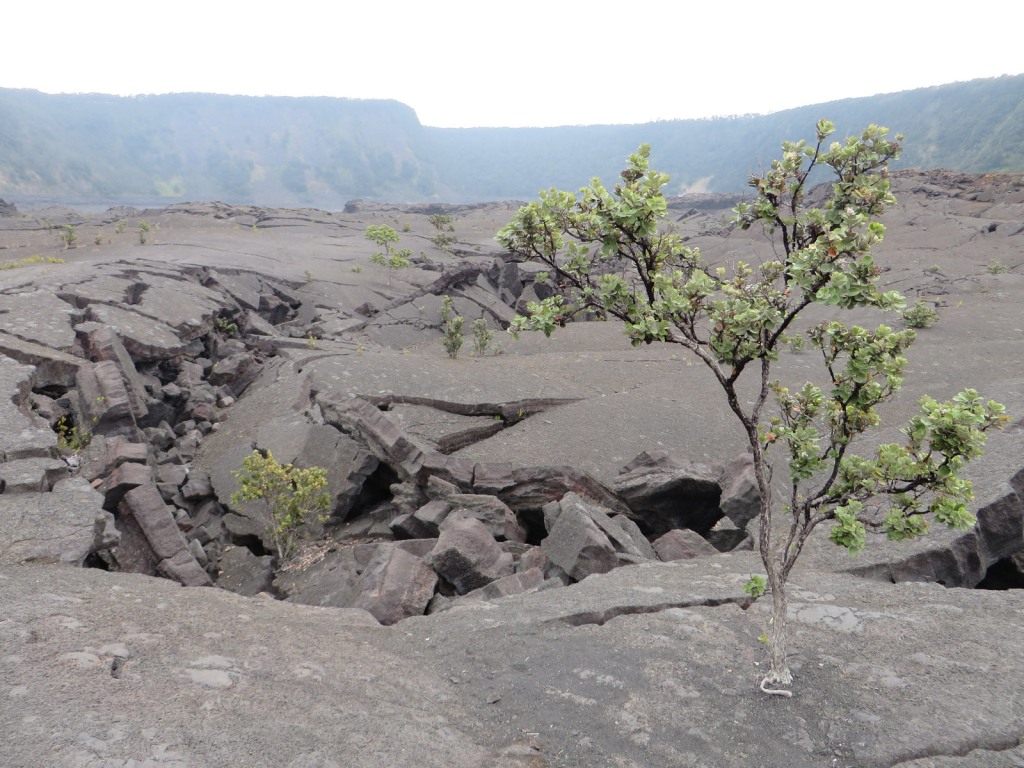
The main and enormous crater of Kilauea was of course off-limits to non-volcanologists, but us regular punters could march a mile or so across the Kilauea-Iki crater floor, as it was far less likely to result in a fiery death. The lava surface is cracked into chunks, much like a typical British roadway.
A former Hawaiian roadway can be explored down the Chain of Craters road, this one was partially buried in the 1990 eruptions. Since then is has not been possible to drive the coast through Volcanoes National Park.
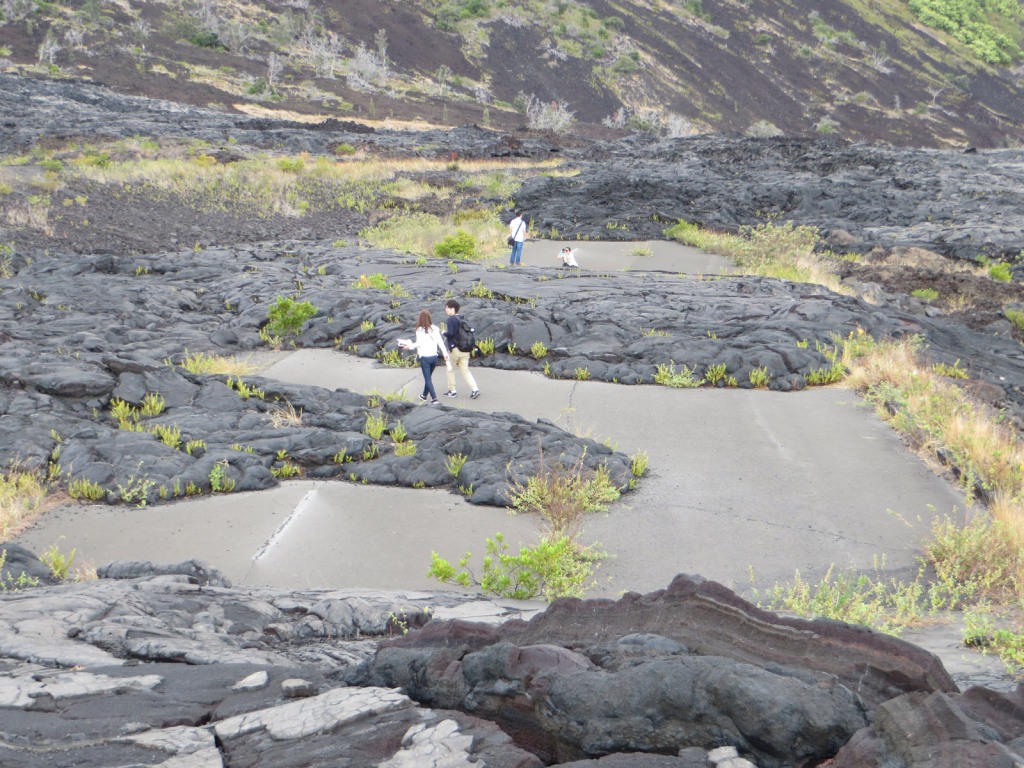
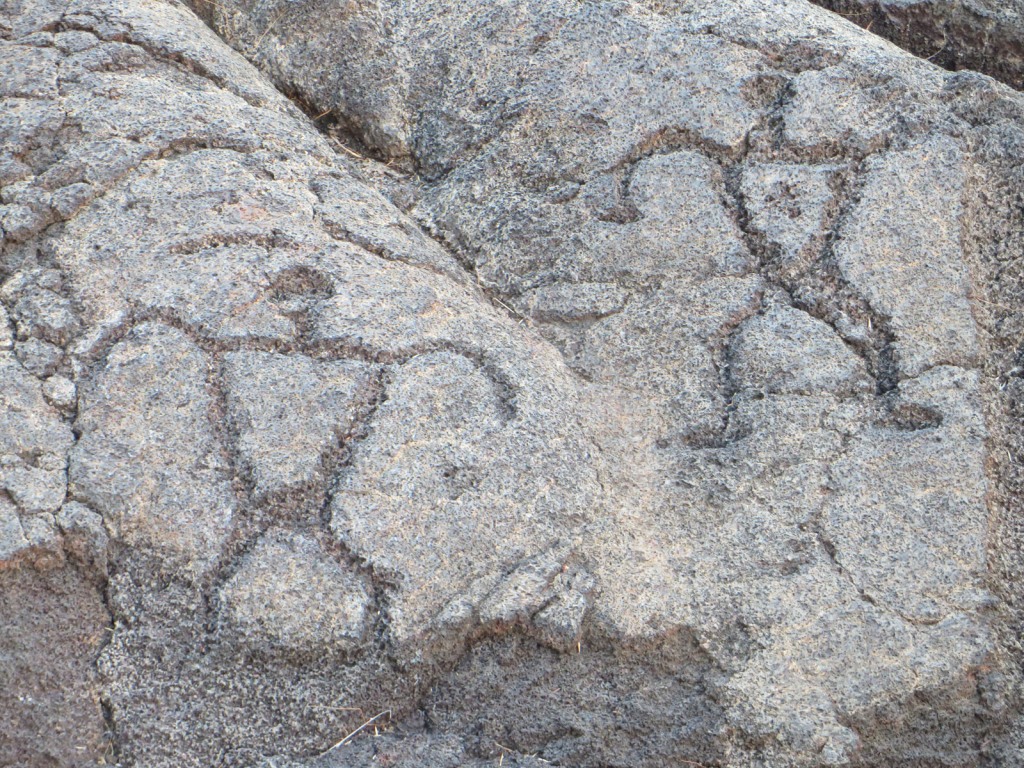
Also within the park are the Pu’uloa petroglyphs, a short distance from the road along a viewing boardwalk. Carved straight into the lava rock, these are estimate to be around 500 years old, and have been fortunately missed by nearby lava flows since. They also provided the inspiration for my hat.
To get to the active liquid flow required significant effort, our tour group hiked for a couple of hours through the forest first towards Pu‘U ‘Ō‘Ō crater, and finding liquid lava on the surface requires continual specialist knowledge, as the field was many square miles. It was well worth the effort.

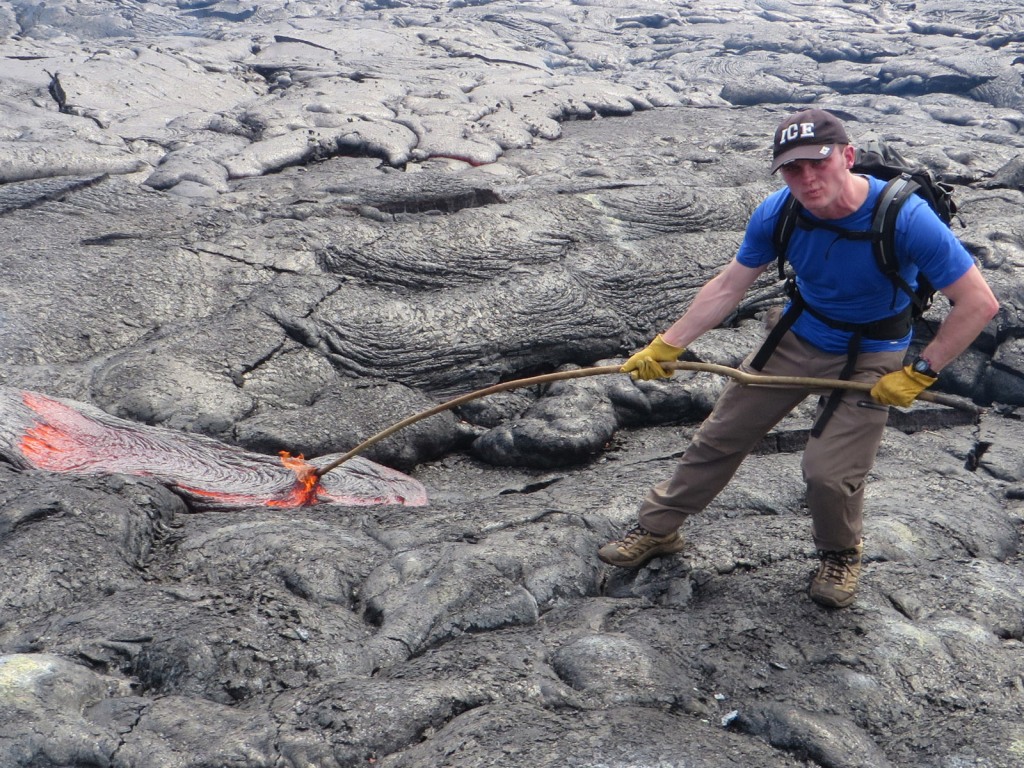
I’m standing on what was liquid flow a few hours earlier, and likely still is underneath. We could interact with small streams appearing on the surface, and the heat was incredible – it felt like my contact lenses were melting onto my eyeballs. The glue in my shoes did melt, but our guides were well equipped with duct tape for that.
Where the lava meets the forest there can only be one winner. As the vegetation is covered it doesn’t burn very readily due to lack of oxygen, but it does create methane pockets which regularly reach the surface and ignite. With the sound of those explosions, the smell of sulphur dioxide (struck matches) and the tourist helicopters overhead, I could have been in a Vietnam war movie.
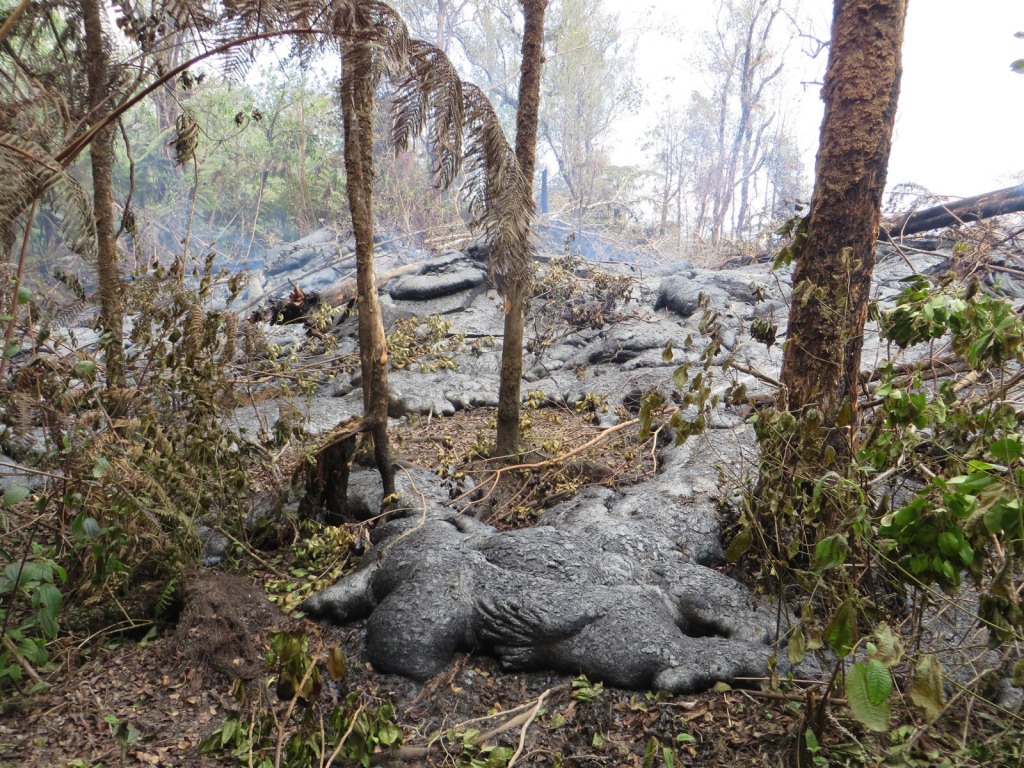
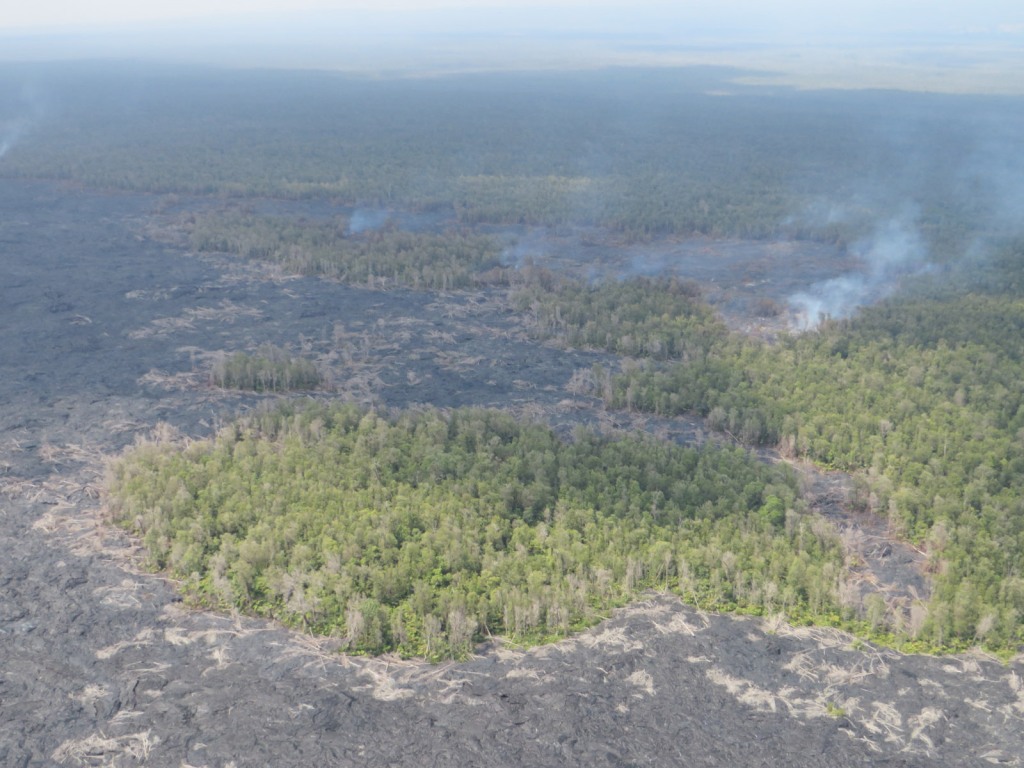
The next day I hopped on a tourist helicopter myself, and saw from the air the area we were exploring.
Closer to Pu‘U ‘Ō‘Ō crater, we could see more active flow and the occasional skylight, windows to the lava tubes hell below.

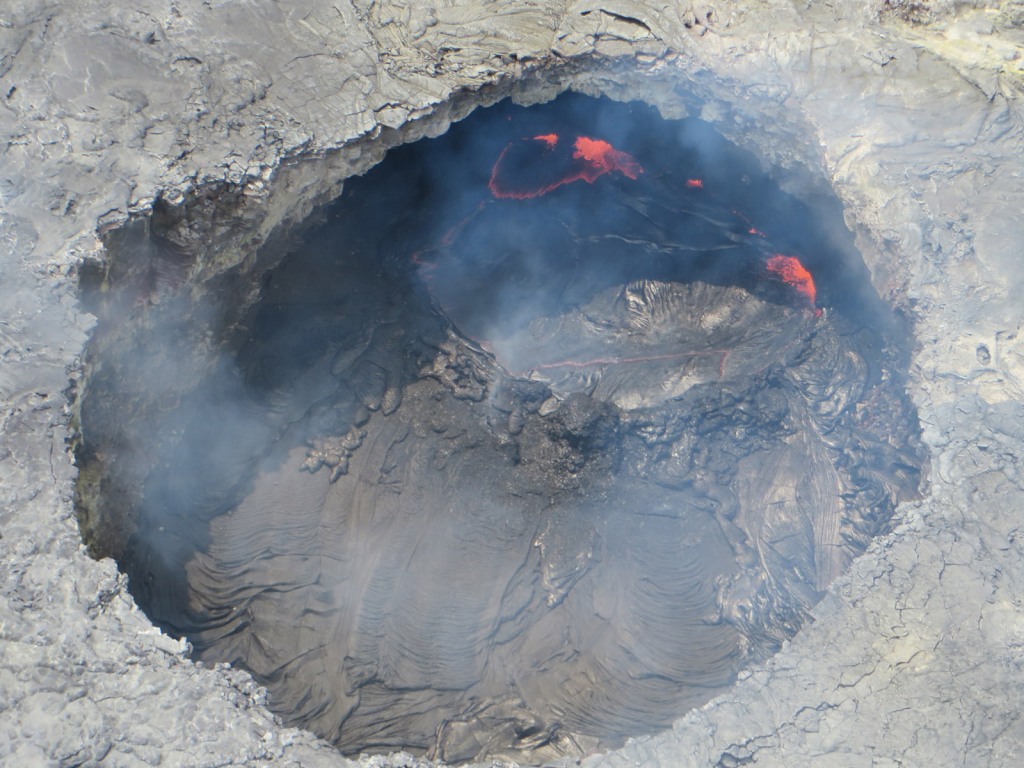
Pu‘U ‘Ō‘Ō crater itself, which constantly effused lava from 1983 until 2018. Occasionally it would flow directly into the sea, although this was not in progress during my 2016 visit. Even from a few hundred feet up in the helicopter (doors off), the heat was intense as we watched the roiling lava at the edge of the crater.
Back to more civilised pursuits, and waterfall viewing from the chopper. This pair are on the Wailuku and Hookelekele rivers near Hilo.

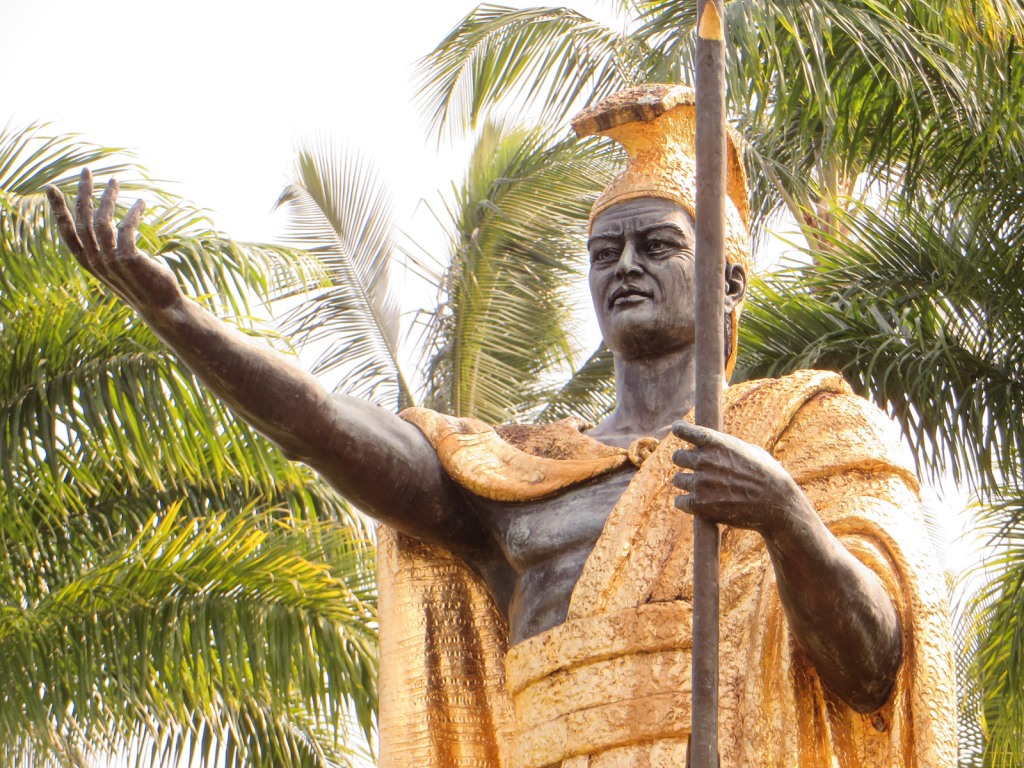
King Kamehameha the Great was the first ruler of the Kingdom of Hawaii, from 1795 to 1819. He presides over the town of Hilo, one-time capital and the largest settlement on the island. There are similar statues of him in Honolulu and Washington DC.
Over on the west coast of the island, I spent my next four nights at the Marriott Waikoloa Beach, relaxing in supreme comfort between sojourns to visit wildlife and explore the area.

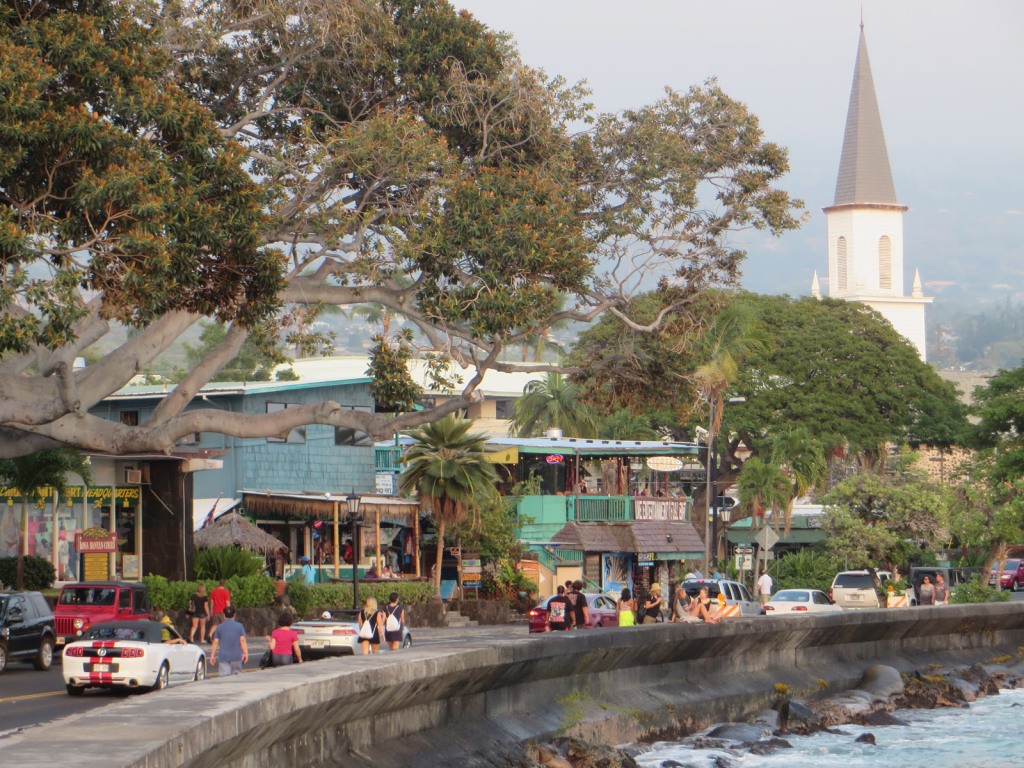
Kailua-Kona is the largest town on the west coast, and with the largest airport is the conduit for incoming visitors such as myself. The town is very pretty and similar in style to Lahaina on Maui.
Spinner dolphins populate the Pacific just off the coast, so I joined a tour to see them in their natural habitat. This is swimming with dolphins the way it’s supposed to be done, no contact and they only stick around if they’re interested in you. It was incredible snorkelling around in a pod of a couple of hundred of them.
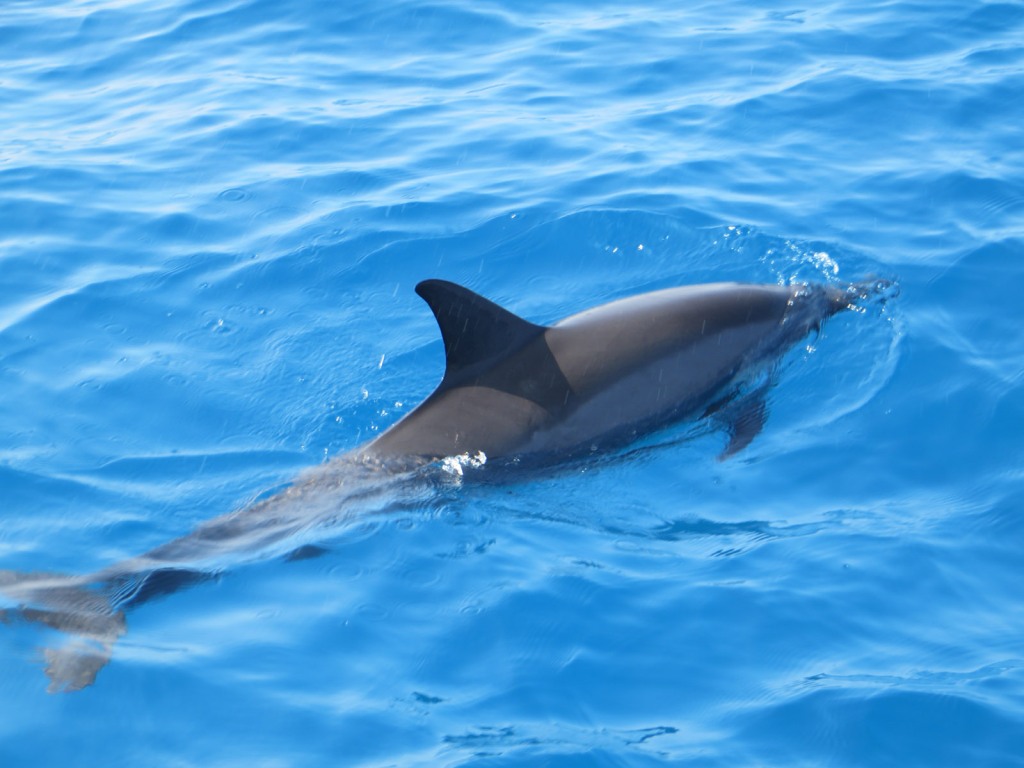
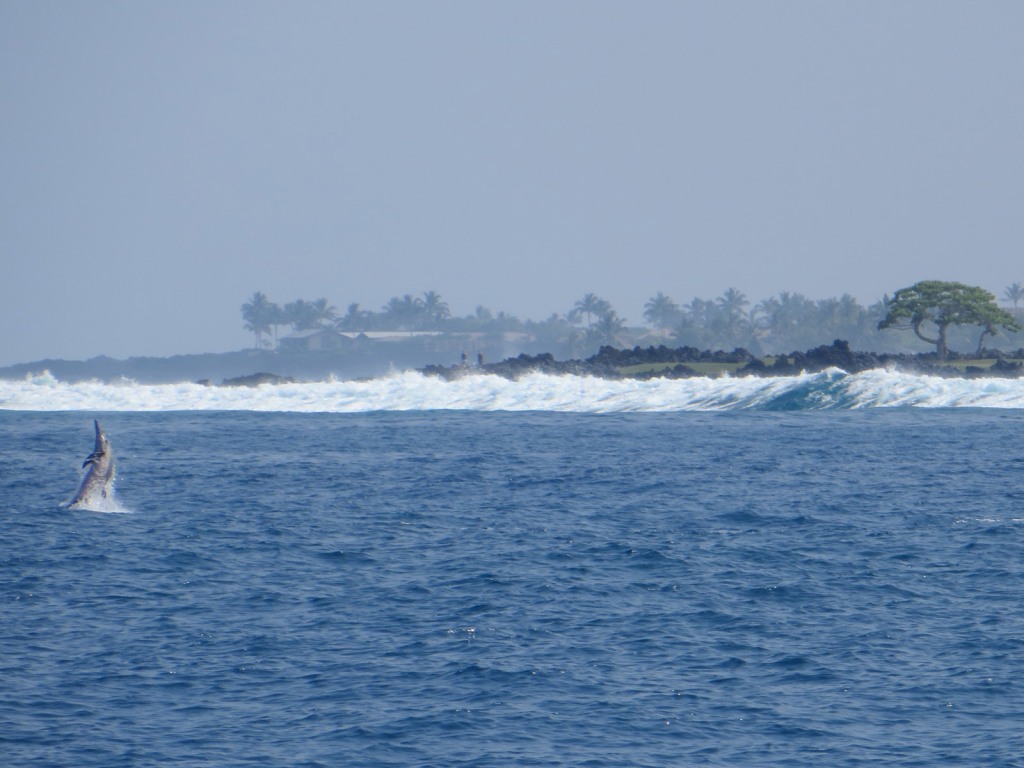
A spinner dolphin leaps into the air for a triple twist. It’s not known why they exhibit this behaviour, but could possibly be simply because it’s fun.
Another bucket list destination, the summit of Mauna Kea. Covered in craters and with a reddish tinge, it looks like the surface of Mars. It’s also very high, at over 4,000 metres, but there is a road to the top up which my little rental car managed to cough and wheeze its way to the summit.
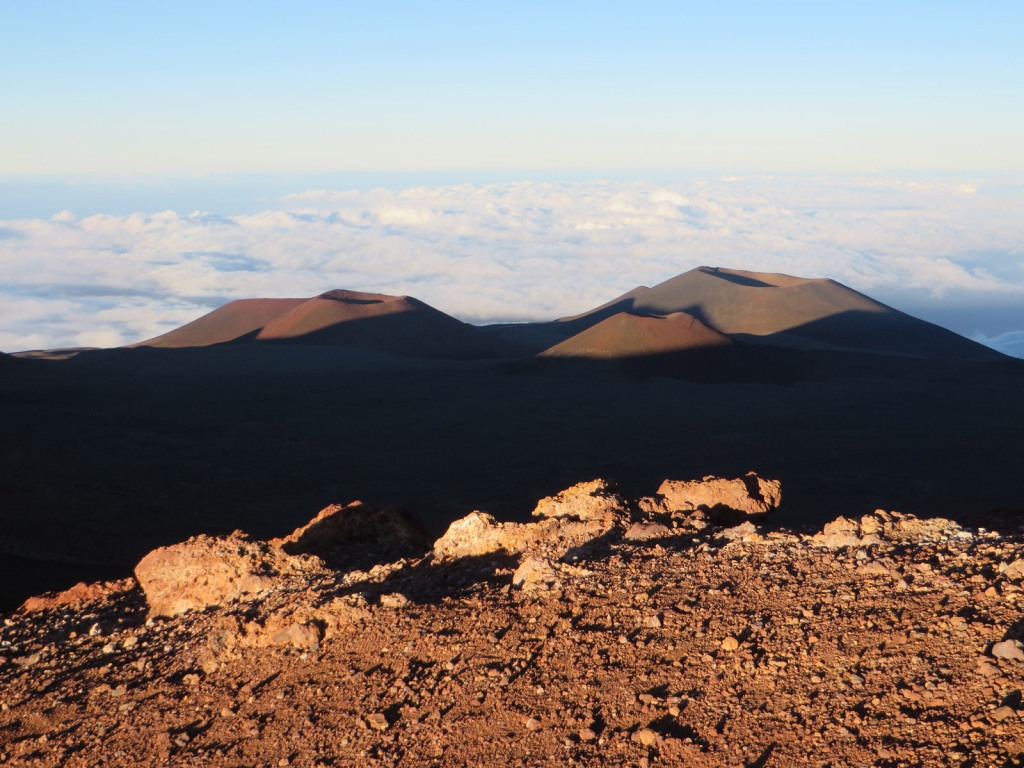
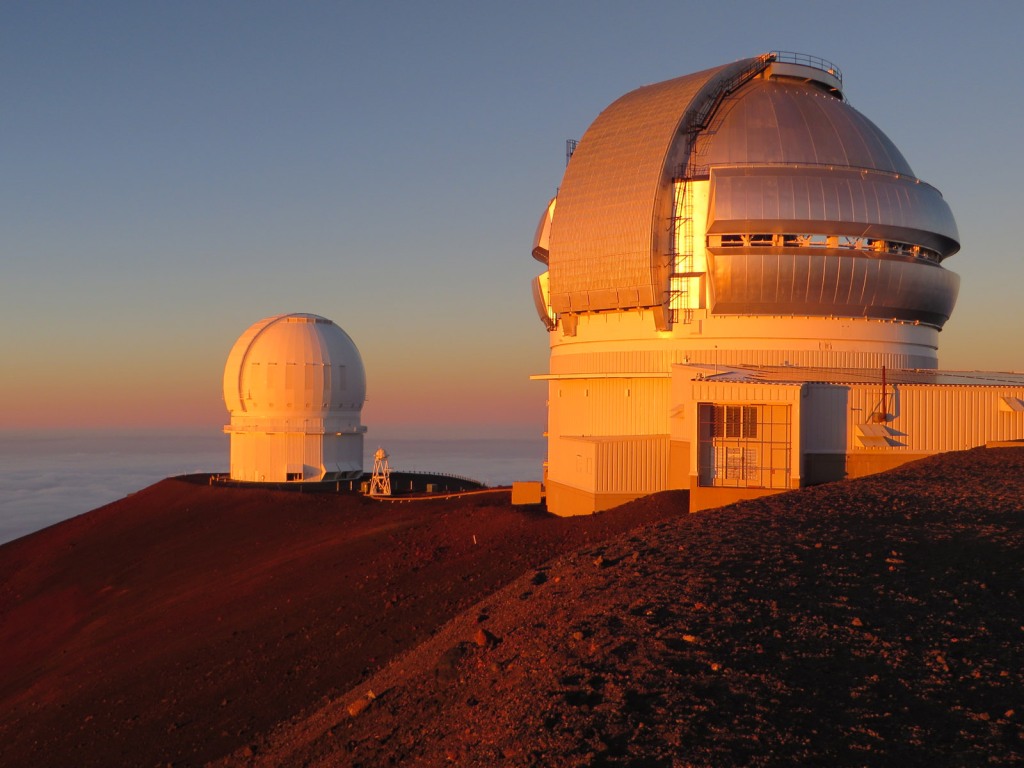
Being very high up, relatively accessible and far from major population centres, the summit of Mauna Kea is ideal for observing the stars. The silver dome is one of the twin Gemini Observatories, for the best possible view, its other half is in Chile.
Never too high up for a selfie. As the sun went down I really noticed the effect of the elevation, my vision deteriorated significantly and I was tripping over rocks like I’d had too many beers.

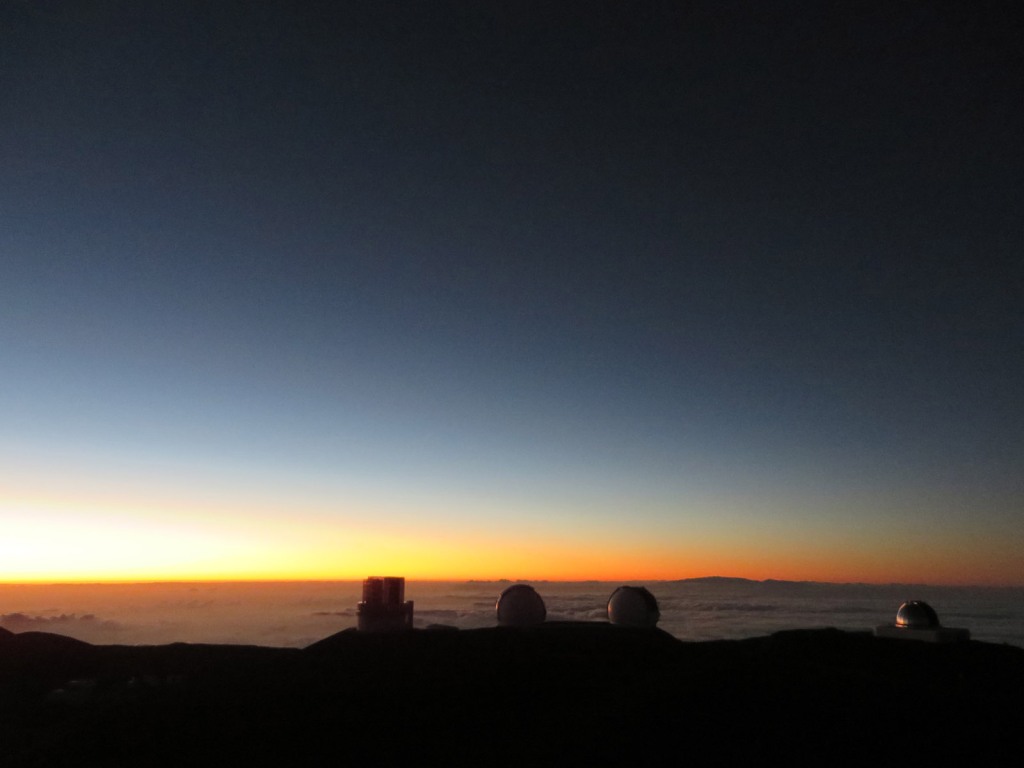
Sunset view from the summit of Mauna Kea across the Keck Observatory, and towards distant Haleakala volcano on Maui on the horizon.
Created 2023
